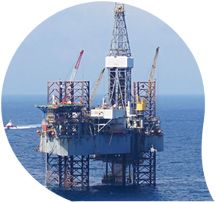
In times of duress, it’s easy to put research and innovation on the backburner. But there are plenty of reasons to make sure it remains a core part of your business, says Rachael Wakefield, Business Development Manager at CENSIS.
It’s fair to say that research and innovation can become an afterthought for businesses during challenging times. At the moment, the priority for many energy firms is trying to deal with the day-to-day tests presented by a sustained low oil price, a trend that looks like continuing through 2016.
However, at times like these companies do tend to start looking at what improvements they can make to products and services that might just keep them ahead of the competition. Innovation is often about the savvy adoption of the best new and emerging technologies to transform existing products.
Being innovative has a key role to play in helping companies find their way out of these choppy waters – it can catalyse recovery, help develop new markets for products and find efficiencies where they weren’t possible before.
And if ever there was a time to uncover new and efficient ways of working in the North Sea, it’s now. To do this, there’s an incredible resource for North Sea firms to tap into right on their doorstep.
 We often say that Scotland is a world leader in sensors and imaging systems (SIS). With 170-odd companies contributing £2.6 billion to the Scottish economy and academics working on genuinely ground breaking research projects across the country, that’s undoubtedly true.
We often say that Scotland is a world leader in sensors and imaging systems (SIS). With 170-odd companies contributing £2.6 billion to the Scottish economy and academics working on genuinely ground breaking research projects across the country, that’s undoubtedly true.
But we can go into much further depth than that: we also have a very strong supply chain of sonar and acoustic technology companies, a track record of innovation in subsea and a pioneering role in advancing underwater communications and autonomous, intelligent systems.
Companies, such as Alba Ultrasound, Diagnostic Sonar and Hydrason Solutions, are carrying that mantle, transforming their markets and moving technology forward at a rate of knots.
In the academic world, we can point to research groups like the Edinburgh Centre for Robotics and the Centre for Ultrasonic Engineering at the University of Strathclyde, which are delivering revolutionary research in their respective fields.
What’s more, techniques used for other applications are being brought into the energy sector, and materials and electronics that were prohibitively expensive just a few years ago are coming down in price. These twin forces are combining to open up a host of opportunities for those working in subsea environments.
And where are these opportunities? They are in asset management, subsea IRM, preventative maintenance and environmental monitoring, to name but a few. We’re looking at a future where inspections are conducted by fully automated systems, in particular to access areas that are hazardous, distributed widely, remote or otherwise inaccessible to personnel.
R&D is rolling out opportunities for sensor systems developers to add greater capabilities to their technologies, either through new components or better analytics. Data is more detailed and increasingly accurate, while robotics are commonplace.
 Those are just some of the possibilities: there are many others. Join us at stand 78 at Subsea Expo to talk about how we can bring you together with the right academic expertise to drive efficiency and future growth for your business.
Those are just some of the possibilities: there are many others. Join us at stand 78 at Subsea Expo to talk about how we can bring you together with the right academic expertise to drive efficiency and future growth for your business.
Meet us there or let the CENSIS team know where you are by tweeting us on @CENSIS121.
You can also read the thought of Neil Gordon, CEO of Subsea UK, on how sensing technology will be central to the future of subsea industry in his guest blog on our website.